- News
- Reviews
- Bikes
- Accessories
- Accessories - misc
- Computer mounts
- Bags
- Bar ends
- Bike bags & cases
- Bottle cages
- Bottles
- Cameras
- Car racks
- Child seats
- Computers
- Glasses
- GPS units
- Helmets
- Lights - front
- Lights - rear
- Lights - sets
- Locks
- Mirrors
- Mudguards
- Racks
- Pumps & CO2 inflators
- Puncture kits
- Reflectives
- Smart watches
- Stands and racks
- Trailers
- Clothing
- Components
- Bar tape & grips
- Bottom brackets
- Brake & gear cables
- Brake & STI levers
- Brake pads & spares
- Brakes
- Cassettes & freewheels
- Chains
- Chainsets & chainrings
- Derailleurs - front
- Derailleurs - rear
- Forks
- Gear levers & shifters
- Groupsets
- Handlebars & extensions
- Headsets
- Hubs
- Inner tubes
- Pedals
- Quick releases & skewers
- Saddles
- Seatposts
- Stems
- Wheels
- Tyres
- Health, fitness and nutrition
- Tools and workshop
- Miscellaneous
- Cross country mountain bikes
- Tubeless valves
- Buyers Guides
- Features
- Forum
- Recommends
- Podcast
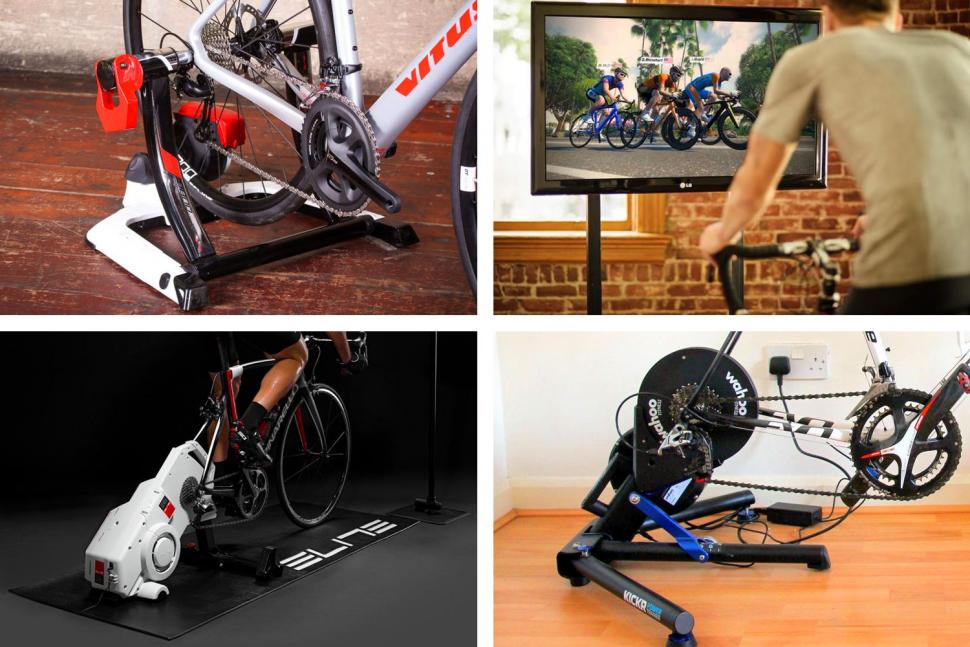 6 reasons why using a home trainer August 2018
6 reasons why using a home trainer August 201810 reasons why using a home trainer is the best way to get fit — and how to make it fun too
Indoor cycling isn't just the less-good alternative to getting out on the road, it's a valuable form of exercise in its own right.
If you’re riding for fitness or training for racing or a summer sportive, then indoor training offers numerous benefits.
1. It’s time efficient
Indoor training can be more time efficient if you don't have the luxury of 25 hours a week to ride your bike. If you only have an hour, say, you can get more out of that time on an indoor trainer as you don't waste any time umming and ahing about what to wear. You can simply jump straight on the trainer and spend more time actually pedalling, minimising the wasted time either side of a bike ride, ideal if you're a time-crunched cyclist.
There are loads of workout sessions available through apps like Zwift, TrainerRoad and Wahoo SYSTM that can add a lot of variety in that hour as well, so you're not just staring at a blank wall, but engaged in the workout and riding with purpose and focus. Some people say an hour on the smart trainer is time better spent than two hours on the road with all the stops and freewheeling that's usually involved.
Indoor cycling is also a realistic option for people who have children, and you can't just leave them and cycling 20 miles down the road - you can set up the indoor trainer in the next room and still keep an eye on the kids.
2. It’s safer
There's a certain grim satisfaction to riding outside when it's cold, dark and wet; some of our most enjoyable rides have finished in the dark with a face covered with mud. Sometimes, though, it can be the safe and sensible choice to hit the indoor trainer rather than brave the elements, especially if there's a storm outside or the roads are covered in snow and ice when the risk factor increases massively.
If you don't fancy riding along dark country lanes then riding on an indoor cycle trainer can certainly feel the safer option.
Granted, if you just want to go for a ride to clear your head, you can’t beat the outdoors, but if you want to do some decent pedalling without letting the conditions impact your training, then taking to a smart trainer can be not only safer, but make better use of your precious time.
3. It's the simple way to train with power
Power measurement is the gold standard in cycle training, and it’s not just for pros, anyone can benefit from using power, especially time-crunched cyclists. Pretty much all smart trainers have power meters built right into them, making them ideal training tools for ensuring you are getting a really good workout.
Once you know your FTP (functional threshold power) you can plan sessions at targeted power zones to really get the most out of your riding time, and really boost your fitness. And ERG mode is the best feature to embrace power training on a smart trainer.
Simply enter the power you want to ride at, 200 watts say, and the trainer will set the power leaving you the simple task of pedalling. No traffic lights or junctions to impede your progress, you can spend more of your time in the key power zone. This means you don’t have to focus on keeping the power at 200 watts, like you do with a dumb trainer, but can just concentrate on turning the pedals.
4. It's better quality
Controlled and targeted training is one of the big benefits of indoor training. There are no junk miles. An indoor trainer makes it easier to be very specific about your training compared to riding outside, allowing you to spend more time in key heart rate or power zones, with no time lost to stopping at junctions or freewheeling down the hills.
It’s also possible to replicate any sort of road, flat or steep, on an indoor trainer, including roads that you might not have the luxury of living near to. There are all sorts of turbo trainer training sessions you can follow to work on specific areas of your fitness, whether you're training for a season of crit races or ultra distance events.
5. It’s faster
Do you feel slower cycling in the winter? You’re not alone. The colder it gets, the more effort it takes. Cold air is denser and it takes more effort to push yourself through it. Cold muscles won’t help, either. Lower temperatures, rain and windchill can mean your leg muscles aren’t operating at ideal temperatures.
That’s why winter rides can be tough, especially if you try and ride familiar roads and climbs at speeds you know you’re capable of. You’re also likely to be wearing more or thicker layers and that restriction and increase in your frontal surface area can play a part in your decreased speed compared to riding in lightweight jerseys and shorts in the summer.
Being 'faster' on a turbo is figurative of course — you're not actually going anywhere. But it sure feels like your effort is more productive because you're inside in the warm and just wearing shorts and a base layer.
6. It's cheaper than buying a winter bike
It used to be the thing to build or buy a dedicated winter bike, complete with a durable frame, solid wheels and sturdy tyres and mudguards, for thrashing out the necessary winter miles. But there is another option. Invest instead in a smart trainer and a subscription to a training app and you have an interesting alternative to that dedicated winter bike, and a tool that is likely to reap bigger rewards come the spring.
7. Get smart
The latest smart trainers with integrated power meters can take your training to the next level, with detailed and targeted workouts that can be incorporated into a structured training plan. They can be controlled from a smartphone, tablet or computer and allow you to easily change the training zones, helping you to get the most out of your training time.
- Buyer's guide to smart trainers + seven of the best
8. Get connected
While the technology in smart trainers is impressive enough, it’s the software that has really unleashed their potential. The likes of Zwift, TrainerRoad and Wahoo SYSTM, to name just a few of the most popular options, have helped to transform indoor cycling. These apps make indoor cycling and training fun and entertaining in a way turbo training never used to be. Zwift even lets you take part in races and organised group rides.
These apps have made indoor training engaging, interesting and exciting, with workout sessions, structured training plans and virtual races providing different approaches indoor training, and lots of options for mixing it up. The smart trainer can be controlled by these apps, so when you hit a climb or interval session, the trainer will automatically increase the resistance. As a result, they are far more immersive than the old days of counting the time down on a Polar heart rate monitor on a traditional dumb trainer.
You don’t even need a computer, most trainers offer both ANT+ and Bluetooth and many apps run on smartphones and tablets. You can even control most smart trainers from a cycle computer, like a Garmin Edge or Wahoo Bolt, and change the resistance levels at the touch of a button.
Zwift even lets you race or ride with friends without even having to leave your house!
You can get the most out of a smart trainer with an app like Zwift. This hugely popular app has gone a long way to transforming indoor training for many cyclists by providing a realistic environment and other real-world cyclists to ride and race against. It provides an experience that is as close to riding outdoors as it’s possible to get without leaving the comfort of your living room. New courses and features are being added all the time, providing all the structured training you could wish for.
Another popular option is TrainerRoad, which offers a larger suite of workouts and live performance data.
9. Realistic road feel - it's almost like being outside
The best direct drive smart trainers (where you remove the rear wheel and mount the bike to the trainer) offer a pretty realistic road feel. Okay, so it’s not quite the same as actually being out on the road, but compared to my experiences with old turbo trainers, smart trainers are silky smooth and about as close to the real thing as it’s possible to get. Add in the app control that simulates steep gradients and it can sometimes really feel like you're riding outdoors, from the warmth and safety of your house.
Another benefit is that you aren't going to wear out the rear tyre as well.
10. It’s fun
Yes, really! Indoor training can be a lot of fun, and more appealing than grinding out the outdoor miles by yourself, especially if the weather is bad.
You can chant 'Rule #5' to yourself all you want, but if there’s no-one to hear you, does it really work? On an indoor trainer, you can do all sorts of interesting things like cadence drills, one legged drills, hill reps, speed intervals and other workouts that can really enhance your cycling fitness, and critically help time fly by.
You can inject more engagement with something like SYSTM, which overlays ride prompts over actual race footage, you’ll be acting out your wannabe pro dreams in no time.
David worked on the road.cc tech team from 2012-2020. Previously he was editor of Bikemagic.com and before that staff writer at RCUK. He's a seasoned cyclist of all disciplines, from road to mountain biking, touring to cyclo-cross, he only wishes he had time to ride them all. He's mildly competitive, though he'll never admit it, and is a frequent road racer but is too lazy to do really well. He currently resides in the Cotswolds, and you can now find him over on his own YouTube channel David Arthur - Just Ride Bikes.
Latest Comments
- Secret_squirrel 16 min 16 sec ago
I have. Put him in hospital....
- bensynnock 18 min 27 sec ago
'One of the issues with yellow boxes is that people drive into them thinking that there’s a space to get out, and then there isn’t. You can be...
- mctrials23 45 min 24 sec ago
And to have to watch other cunts drive in the same way every day out on the roads without a care for anyone else. Its a life sentence for that...
- quiff 1 hour 3 min ago
Fair point, I forgot where this started. My suggestion that untaxed cars you see are unmarked police cars was tongue in cheek; clearly they're not....
- espressodan 1 hour 39 min ago
Lawyers for people who murder cyclists don't offer defences, they over flimsy excuses which courts and juries are happy to accept because everybody...
- djm778 2 hours 3 min ago
There's a growing market of super compact chain sets/cassette combos out there now. More folk are realising there's a lot of 'aspirational' gears...
- SaveTheWail 3 hours 30 sec ago
'Next they'll be having to put groins [sic] in...'...
- jesse58579 3 hours 45 min ago
I owned a Shimano DuraAce crank set FC-7950. The crankshaft snapped while I was biking about 20mph on a gravel road. I had video of my crash with...
- Pedal those squares 5 hours 30 min ago
Thanks for the reminder. Must, book a trip to the bike shop for "ANOTHER" inspection. By the time they check it every year, it would have been...
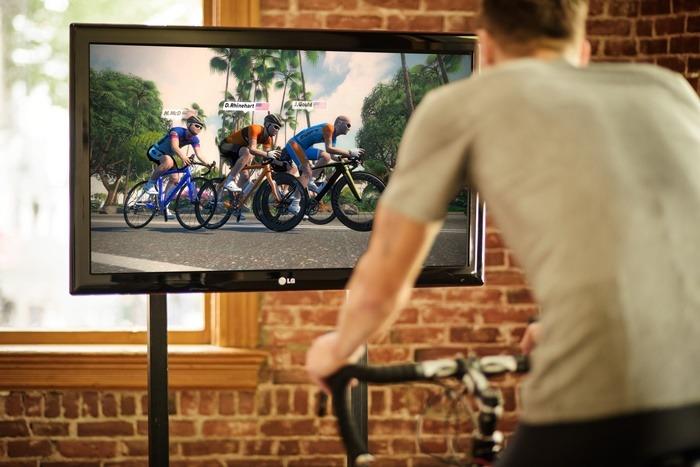
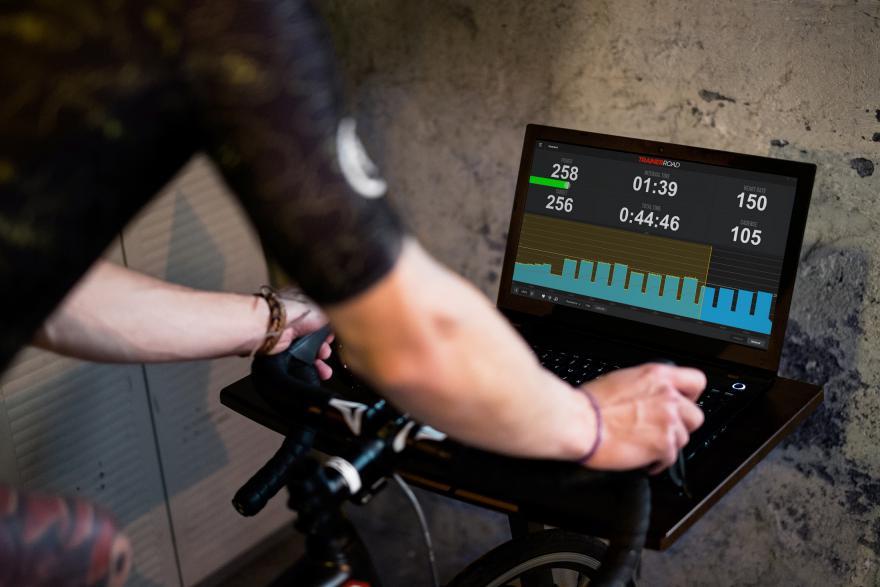
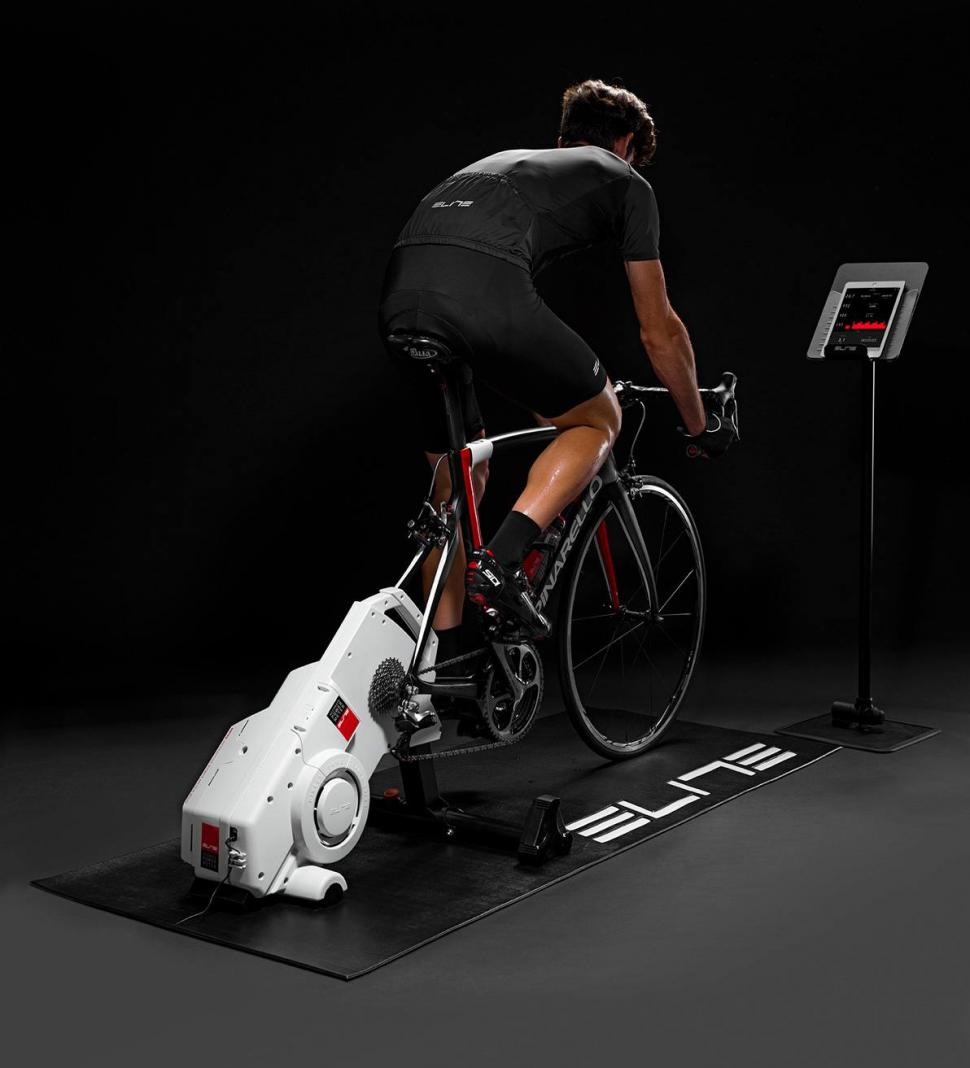


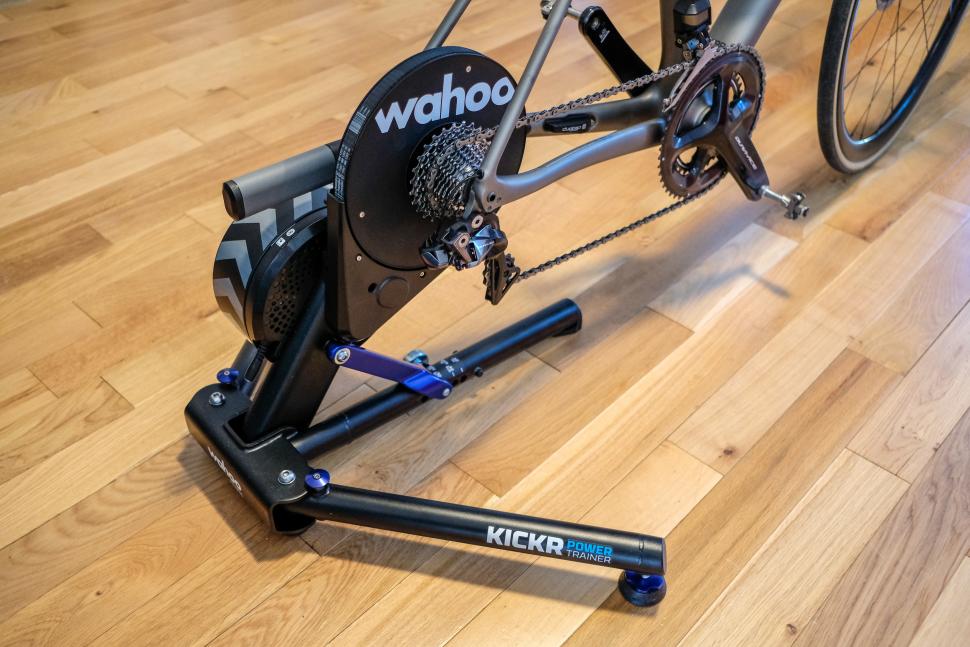
Add new comment
31 comments
BUT....it means you dont improve your bike handling for when you do ride outside, no experience of wind, bumps, gravel, no understanding of other riders around you. or coping with rain and descents.
It may be a benefit to avoid those things but you do need to learn and hone those skills too.
Absolutely true, but then I can't imagine too many people ride exclusively indoors!
I use indoor training to supplement outdoor training, to get fitter for events, for when I can't get outside because I only have an hour to spare, not half a day, and because it's far more controllable and therefore provides, for me at least, a better quality workout.
Last year I almost did. Combination of no commute, lurgy making cafe stops unattractive, and getting sucked in to chasing a year-long challenge on my platform of choice, meant I spent way more time on the trainer than I would have done otherwise, and the number of outdoor rides was in single figures. When I did venture out, my awareness and handling had definitely suffered.
I think it's a life saver especially in the position we are in now. But it was also noticeable after the first lockdown in summer, that those of us in our club who'd been zwift racing twice a week and otherwise doing zwift social/ training rides, were noticeably faster and stronger than those who hadn't. I'm sure it does also depend on the kind of indoor riding.
oh come on!! not that home trainer talk again!! we are cyclists, never forget
I finally got my BKool trainer set up in the garage with my Giant. Thing is, I don't want to risk leaving a TV out there, as I'm not sure how TVs cope with cold and humidity etc. So at the moment, I just have my Apple Watch to tell me when I've done half an hour, but no way of knowing speed etc. Then I had a brainwave. When I'm commuting on my Genesis Flyer, I 'top out' at 20.8 mph. That means that on the level, there's no point in pedalling past that speed as my legs spin uselessly, and the bike starts to wobble. So I swapped the Giant out for the Flyer, and now I know that half an hour at 'top speed' on the single speed is half an hour at 20 mph.
I've led a sheltered life.
"Controlled and targeted training is one of the big benefits of indoor training. There are no junk miles."
This sounds a plausible theory, but is there strong empirical evidence to back this up? Cycling is primarily an endurance sport, and an over-emphasis on targeted effort (esp. in winter) might be counter-productive. It may also be easier to slip back into our 'comfort zone' in an indoor environment which we control than in 'real-world' conditions (esp if that includes group riding, strong headwinds, unexpected detours, etc). I'm not saying it has no place (as all pro cyclists include at least some indoor training by choice), but a convincing theoretical proposition is not the same as empirical proof...
See www.wattkg.com for empirical data etc. I think this guy is a Norwegian PHD student studying physiology and training, really useful wee site and includes empirical data comparing different training styles (e.g. base miles only, base with high intensity, high intensity only etc. etc.).
I would (respectfully) disagree with your point regarding comfort zones, as the whole point (for me) of indoor training is that you can properly measure your efforts and in theory should be basing them on your FTP/Max heart rate for proper results. Therefore, if you slip into your 'comfort zone' you're basically doing it wrong, you should be riding in a specific zone which should be measurable via power/heart rate or even just speed (through trial and error I know what speeds I can maintain on my turbo for a given training zone).
I think the accepted polarised training structure (80% volume 'easy' and 20% volume 'high intensity') is relatively well proven, so you do your 80% out on the road and 20% indoors.
In your example, the over-emphasis on targetted effort would be someone who just relied on 2 or 3 turbo sessions a week with no base volume. I tried this when I had a broken collarbone, only did 2-3 sessions on the turbo a week, typically 45 min each, and sufferred for it when I got back on the CX bike.
I think the more highly trained you are the more high intensity you can do, but you still need to maintain volume, and 8 hours a week on the turbo sounds a little, err... 'dedicated'!
I don't doubt the principle of 'polarised training structure' or (relatedly) the need to base effort on FTP/Max heart rate. The website you refer to is also a great resource, but I don't think it 'proves' that indoor training in itself produces superior results. Indeed, it suggests that high training volume is key - and this often suffers when cyclists over-rely on indoor training. Of course, the only way to know for sure would be a 'double blind' RCT - but I've no idea how that could be conducted in a rigorous way...
Ørn suggests that it can be beneficial, in the context of endurance - it's not necessarily key however - the rest of the article has this (important) discussion about increasing volume
On our club training ride last Saturday everyone who'd been doing the turbo all winter were dropped. Those who'd been outside and actually 'cycling' were not, draw your own conclusions from that
Totally agree with this I haven't got the legs on the road after coming off the trainer. 4 weeks into the road season I'm on par 8 weeks in they struggling to keep up. I love 30 second over unders because when your attacked on the road you can just keep on attacking but endurance wise I'm in bits for a while
dreamlx10 : Not sure what the point you're trying to make is - without any other data about the groups of people it's basically noise.
As for the effectiveness of indoor training goes, it's easy enough for training to be just wrong - either not structured, or the wrong structure - it's not a panacea for everything. Just sitting on a trainer pedalling is no automatic ticket to performance in the real world, in a exactly the same way that cycling outside isn't. It's predominantly what you do, not where you do it (modulo balance perhaps).
The only conclusion I draw from that is that the people who had been on the turbo all winter had been doing it wrong (assuming their goal was to maintain or improve fitness).
I think it's reasonably well accepted now that you can't compensate for lack of volume in your riding, and unless you're a proper Zwift addict you're unlikely to be doing 6-10hrs a week indoors!
I tried to maintain fitness on the turbo when I had a broken collarbone, 2-3 sessions a week for a couple of months and I suffered when I got back on the bike.
Doctor, I was more than comfortable on mine post shoulder surgery. I also use Rouvy - I'm not knocking Zwift but I'm not up for gamification and sit at computers all day; at least Rouvy felt a bit more like the real World and I can do some local clims and some interesting Internationals...
How is moving 2-3 inches in hour faster than a mile on the road in 3-4 minutes I never really liked the turbo in my less time consumed use as it seemed boring but turbo sesions based around power intervals seem to go faster and I now find the opposite
I never really liked the turbo in my less time consumed use as it seemed boring but turbo sesions based around power intervals seem to go faster and I now find the opposite 
Reluctantly just ordered one. Shoulder injury/operation means I can't ride on the road for some time, but hopefully a trainer will be stable enough to allow me to ride without putting weight on my shoulder. Rouvy looks promising for riding places I would never otherwise go, so going to try taht out.
That is how I got into indoor training, coming back from a fractured heel, where I couldn't walk or cycle outside due to vibrations, but found the smoothness of a turbo helped my rehabilitation
Having had surgey on my foot i've been off my bike since september, i now plan to use indoor training to set me up for spring, i'm only a sportive rider but a 12 week traning plan on swift is going to help me... i can ride as far as i feel comfortable and stop if in pain, if i was out on the road and found myself miles away in discomfort.... the only problem is i'm starting to justfy to my self that i need to spend £££ on a smart trainer... seeing the neo has dropped to £850 LOL
FulGaz is an excellent virtual ride app. Tons of videos of great rides on several continents, adjusts resistance of trainer to gradient, works brilliantly on an Ipad or Apple TV. I did Ventoux the other day- I suspect it was easier than the real thing, but it was no walk in the park.
I used to hate turbo with a passion but after some changes and perseverence I now in a strange sort of way actually enjoy it. But, for me there are certain key elements to make it that way:-
1. Environment - Make it as pleasant as possible. Personally I couldn't and wouldn't train in the garage. I ride in a garden room with loads of windows (that I can open!) and in front of a large screen tv. So see how far you can push or persuade your other half and don't be stuck in a dungeon somewehere
2. Get a Direct Drive trainer - I have done both and the difference between using direct drive and one that uses the rear wheel is night and day! It is quieter, more responsive, doesn't slip and is more road like in it's feel. Better still if you can afford a controllable interactive trainer.
3. Get online and use a training platform. There are plenty out there and they offer trial periods to let you try them out before committing. Personally I use Zwift as do a whole host of pro riders.
4. Get some decent sound and a punchy playlist - louder the better.
5. Don't forget the industrial fan and the large towels. If you are doing it right you will need them.
6. Embrace it. Do it with the right attitude and set your self a training target or long term goal.
7. Last but not least DO get out on the road whenever you can to keep the variety and avoid being drawn into a monotonous training plan. It is good to get the fresh air but more often than not depending on where you stay it is just pretty dam unpleasant or unsafe to venture out. If you are addicted to your daily cycling hit then the turbo is your saviour!
I have set P.B.'s in all of my TT distances in the last few of years despite being well into my 50's and it's all thanks to my now newly found enthusiasm for the turbo trainer. No longer do I come out of the winter trying to find my fitness in April and May, they are now my fittest months of the year. In fact, even during the summer I now have to occasionaly do the odd intense turbo session as I find road riding, particularly solo training, tends to let my levels drop.
BigRingVR has become quite popular if you want to ride the famous climbs from around the world. It has HD quality video of the route recorded by a vehicle at cycling speeds, so no wobbly video. You can also upload your own video/gpx,Fit files to rerun your rides
Ive moved away from Bkool, and now use Zwift for racing, leisure riding. I combine TrainerRoad and Zwift for multi hour training sessions-I have the structured TR workout in ERG mode and the visual of riding with others to pass the time on Zwift. Its dead easy to setup.
I absolutely love indoor training, I've migrated to Zwift for my fun riding and racing. I have a dedicated PC, 32" monitor, a huge fan. I use trainer road for specific training and Zwift to try out my performance. I've just got a Wahoo Elemnt which will allow my to load other rides from strava and let it interface with my Kickr. I used indoor training specific to experience the time and effort it take to climb Mt. Teide. When I road up the real thing I didn't feel as intimidated and really enjoyed the climb. I'll be using specific routes for Ventoux this month for my real attempt in autumn.
What's the best simulator for virtual rides (eg. Teide, Ventoux)? What software do you use that lets you choose them on demand (say, 'right, Sunday I'm doing a virtual Ventoux' ).
I have a Kickr and have based all my indoor training around TrainerRoad and some sufferfest vids, but would like to mix it up a bit, and having a virtual go on some climbs I haven't done would do that...
(haven't tried zwift/bkool yet, partly out of a slight concern that I'd get carried away with the competitive aspects and all the discipline that I have with my TR plans would go out the garage door)
If you're into climbing, try https://veloreality.com/
Lovely actual footage of climbs and some other routes in Full HD and 4K, syncs to the speed of your smart trainer, and adjusts the trainer resistance to reflect the gradient. Videoas are downloaded so don't stutter due to slow broadband.
If you don't have the fitness for Ventoux / Mortirolo / Gavia etc, you can limit the gradient.
Turn the fans and the music up, and turn down the lights - and enjoy; I find it ace
For me, the whole point of cycling is to get outdoors, regardless of the weather.
I HATE indoor training but it's a necessary evil especially where I live where the weather isn't good for riding 5 to 6 months out of the year.
Pretty right, indoor training is super useful for us, to improve skill and balance. High race indeed from that.
I understand why people use them, I understand they can be time efficient; I understand they're a very controllable method of training, but on the whole I'd rather stuff angry wasps up my ass than train on a turbo trainer.
Just sayin'!
I love riding my trainer and can't wait to get back my VERY expensive NEO from repairs Tacx is very good... but only when it works.
Tacx is very good... but only when it works.
What I soon found out is that it is very easy to find an excuse not to ride my bike... weather, traffic, etc.
It is very difficult to find excuse not to ride trainer. It takes just 5 min to put your bibs on, boot up PC, get your drink, switch on fan and you are away.
For me 1h on trainer is as effective workout as 2h on road. To get out of the city on to a nice stretch of road takes about 30min, there I can start doing my 1h of intervals, and then 30min back.
Pages